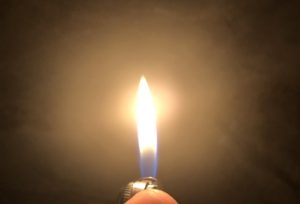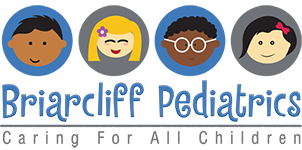Teaching Kids About Fire & Heating Safety
- On Nov, 16, 2018
- Doctor Notes
- Latest News
Winter presents parents with an excellent opportunity to teach their children about fire safety. According to the National Fire Protection Association (NFPA), half of all home fires are reported in December, January, and February. To minimize the risk of burns and other heating-related safety concerns, we recommend teaching kids about fire-safety protocols from an early age. We appreciate that most parents practice competent fire safety, but we think the extra wintertime heating needs make it a great time for hands-on instruction. The following rules-of-thumb have been adapted and condensed from lists compiled by the American Academy of Pediatrics (AAP), American Red Cross, and NFPA:
 Year-round fire safety & preparedness:
Year-round fire safety & preparedness:
- Have a fire escape plan ready in case there’s an emergency. Ensure your kids know the plan and how to call 9-1-1.
- Stage household fire drills once a quarter with the family. This will give you opportunities to make safety into something creative, fun, and educational.
- Demonstrate and help kids practice stop-drop-&-roll.
- Emphasize the importance of staying close to the floor during a house fire (to avoid smoke inhalation).
- Keep a tested fire extinguisher nearby any potential fire hazards. Make sure your kids know how to use it and where to find it.
- Test your smoke and carbon monoxide detectors once a month and replace the batteries at least twice a year; teach your kids to recognize the sounds of these alarms.
*Contact your local fire department for more information. Many firehouses offer free public tutorials, and your local one might even make a free educational house call.
Reducing smoke inhalation (the number one fire-related cause of death) & other potentially harmful airborne contaminants:
- Before you start a fire in the fireplace, make sure the flue or damper of your chimney is open. Shine a flashlight up into the chimney to check. Do not close the flue or damper until the fire is completely out.
- Keep any room in which a fire is burning well ventilated. This means cracking a window or periodically airing out the room by opening the door.
- Make sure any wood you burn is well-aged and completely dry. Green or damp wood produces excess smoke, burns unevenly, and accelerates soot buildup.
- Have your chimney cleaned and checked by professionals at least once a year.
Reducing fire hazards:
- Keep any furniture, books, drapes, or clothing (anything even remotely flammable) at least three feet from your fireplace, space heater, furnace, or wood-burning stove.
- Keep kids at least three feet away from any heat source.
- Never leave a heat source unattended, and never leave a child unattended around a heat source.
- Install a safety screen in front of your fireplace to discourage children from getting too close.
- Keep any fire tools or accessories, like lighters, matches, pokers, etc., out of children’s reach.
- As long as you have young children, invest in flameless electronic candles for areas within their reach.
We at Briarcliff Pediatrics hope our tips can help you and your family stay safe while basking in the warmth and comfort of your home this winter. Dr. Ray Deeb and Dr. Ashley Brown provide comprehensive healthcare for newborns and children up to the age of 18, and they’re currently accepting new patients. If you would like to learn more about our practice, contact Briarcliff Pediatrics to schedule an appointment or a complimentary meet-and-greet. Don’t forget to follow us on Facebook and Instagram to get the latest health tips and news in children’s healthcare, and check back often for new blogs.




